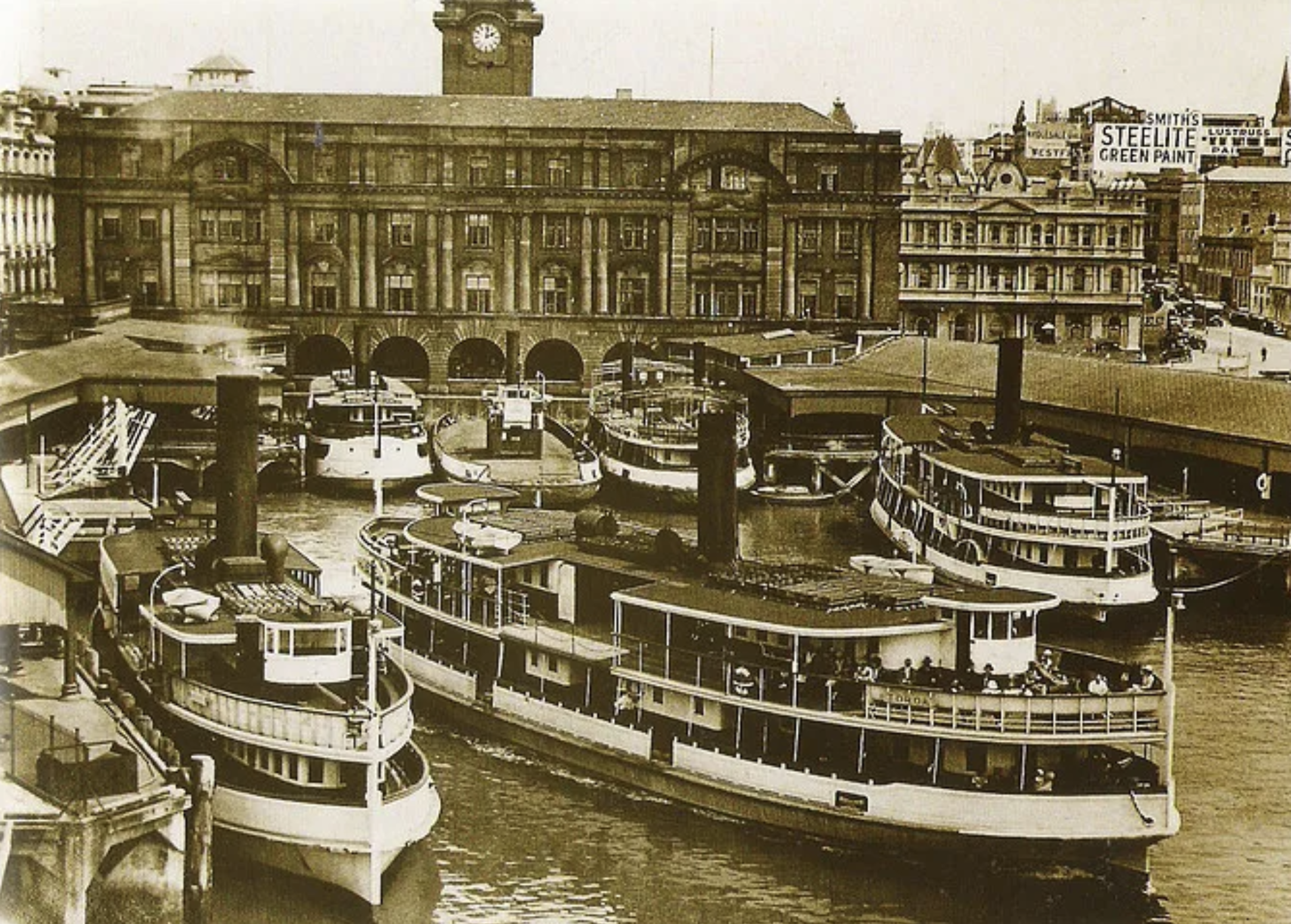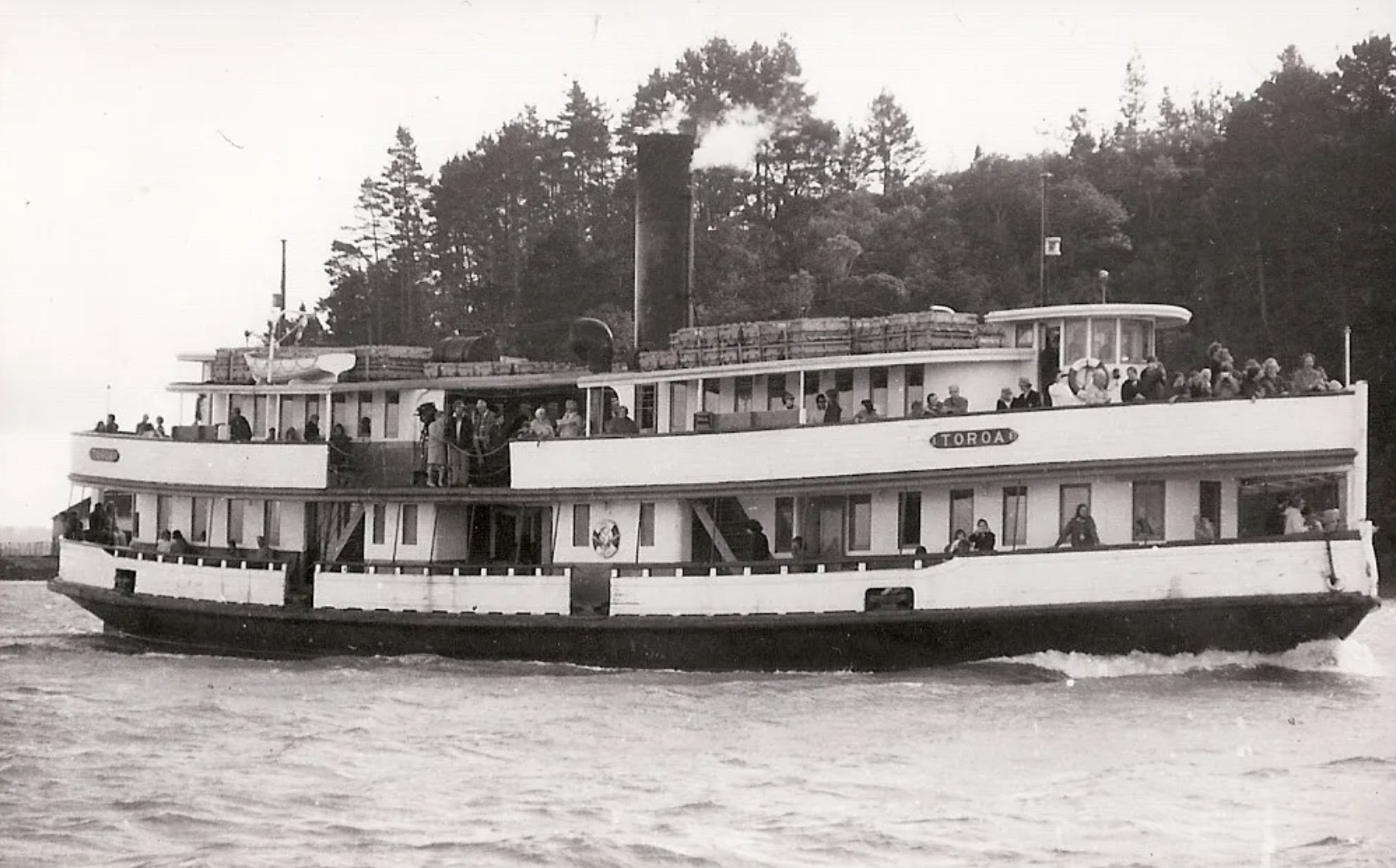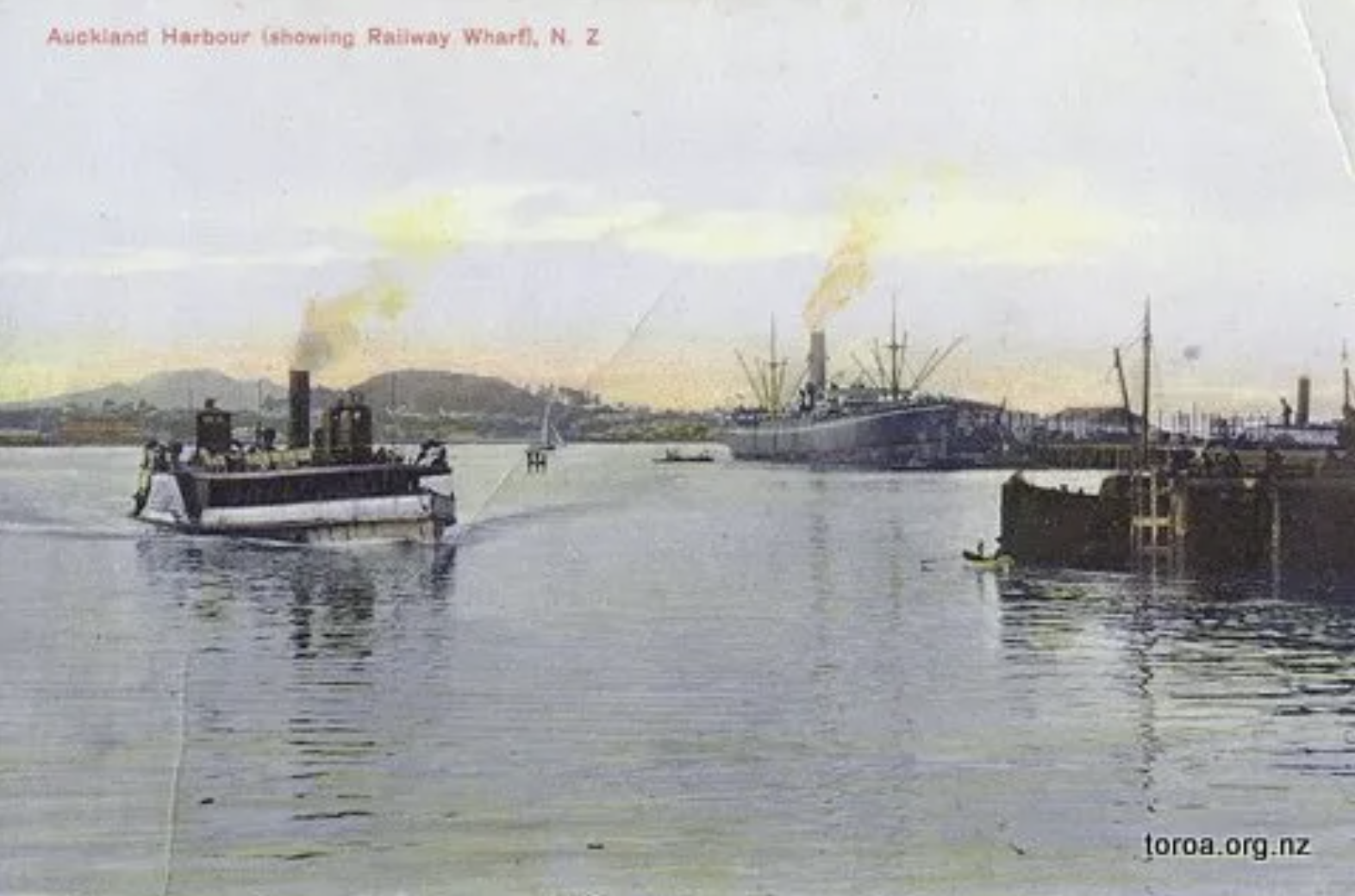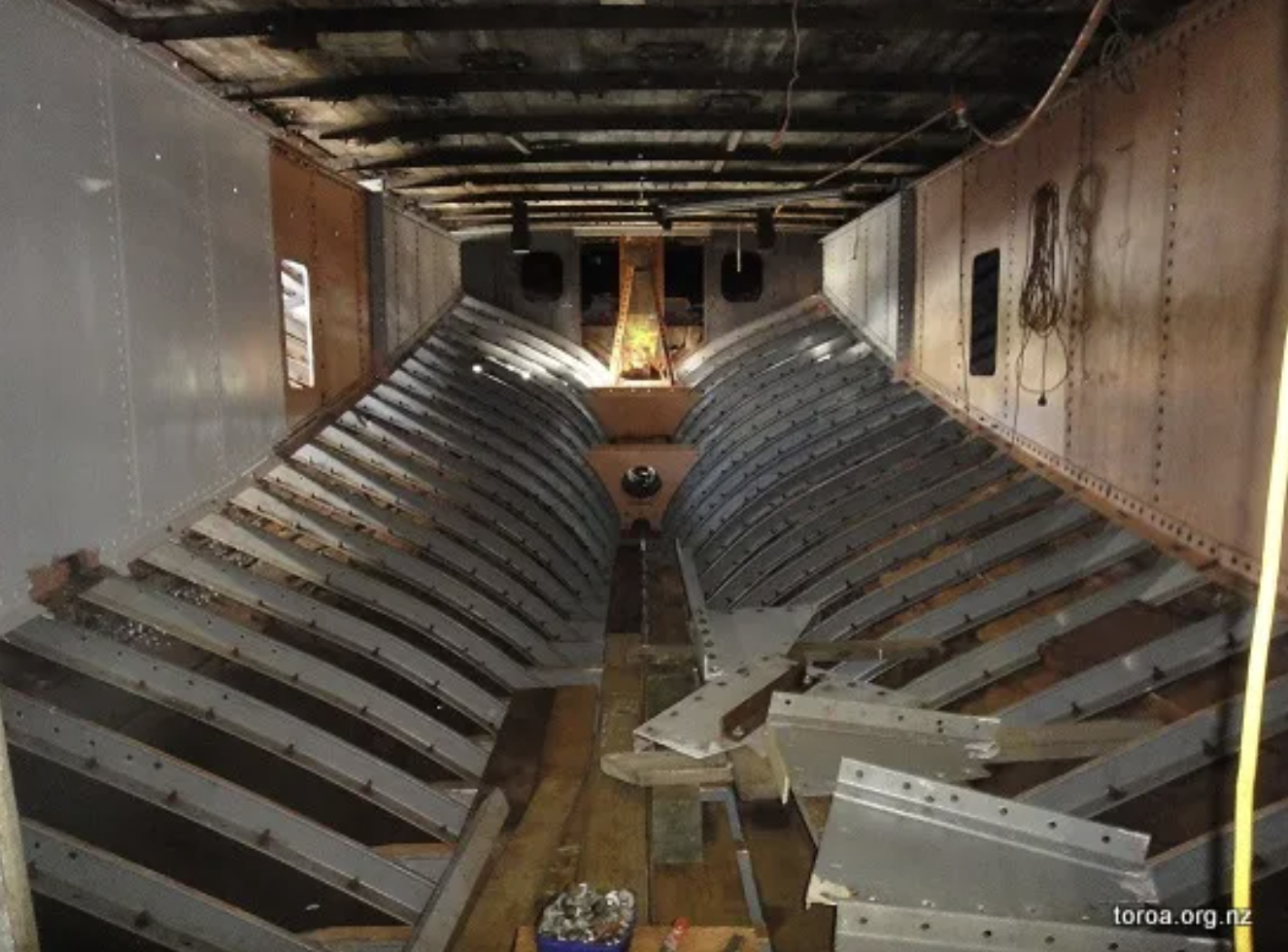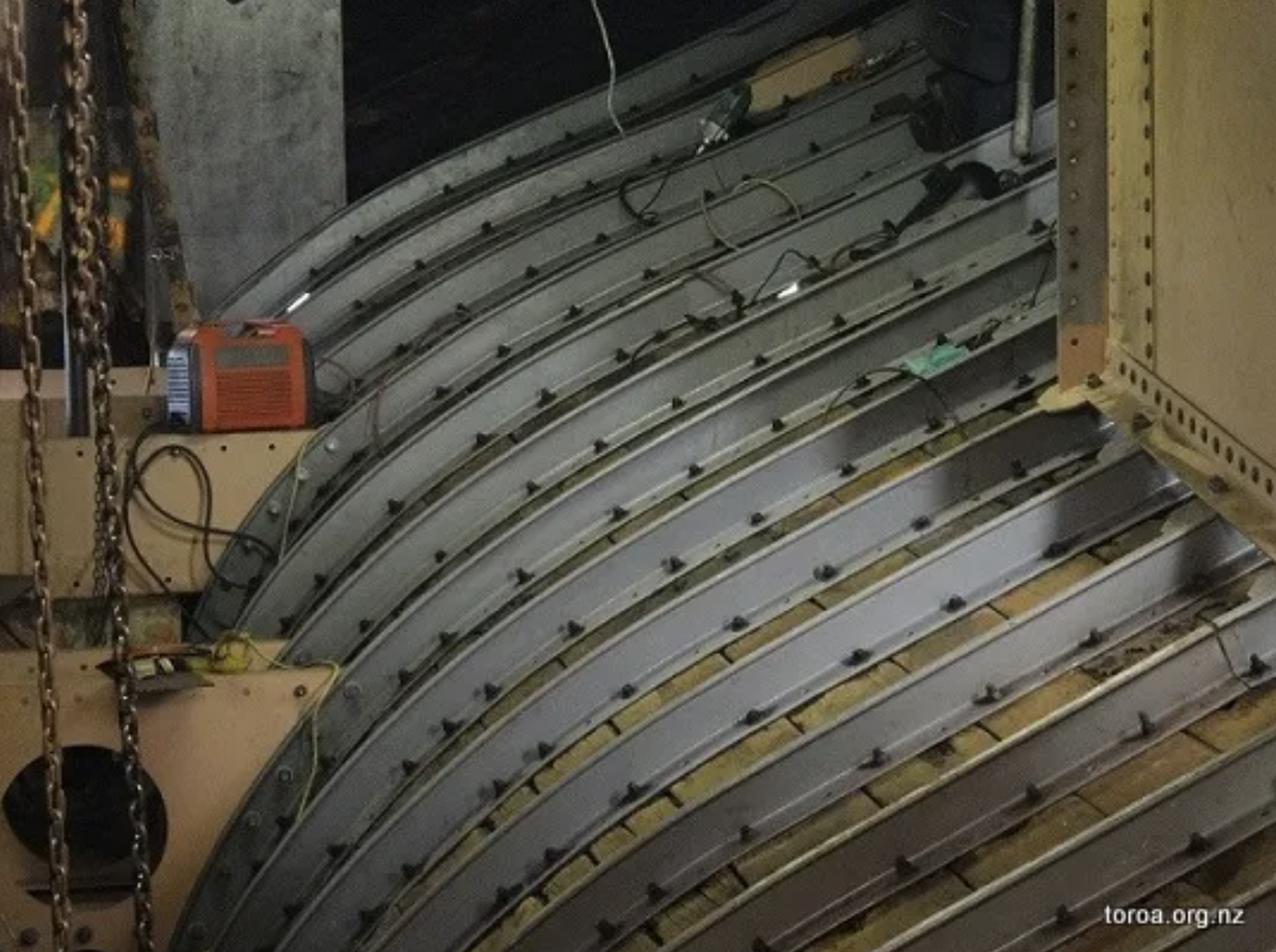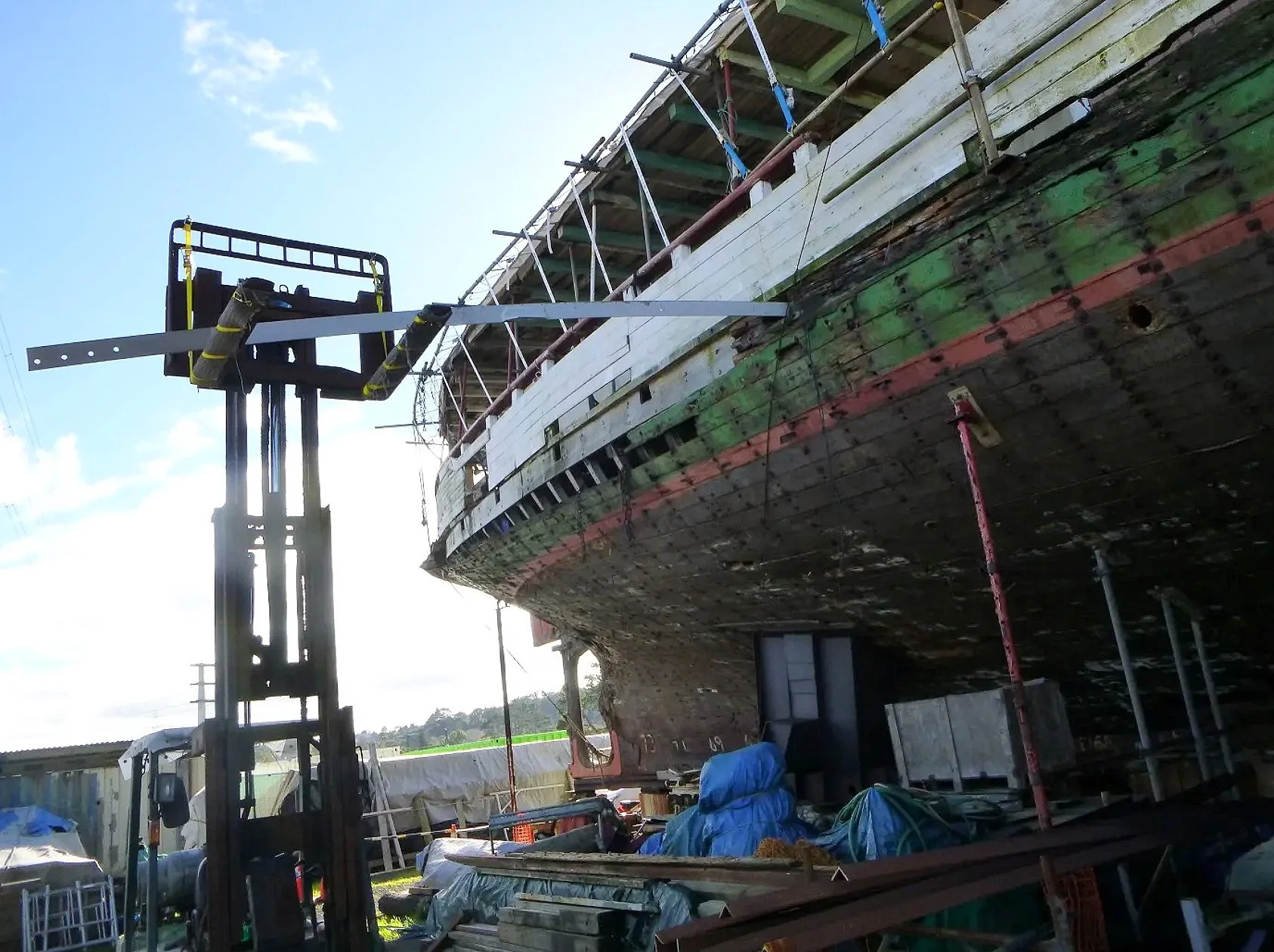double-deckers, with propellers- Toroa
Last week I was lucky enough to sit down with Peter McCurdy, the first curator at the Auckland Maritime Museum (Now the New Zealand Maritime Museum), in his Titirangi home, in west Auckland and have a chat about boats. While Talking with Peter, the thing that became abundantly clear, was how little I know.
Wherever the conversation wandered, Peter would add valuable insights, tactfully correcting my mistakes and enriching the discussion with personal insights. After a few minutes it was clear that I was in the presence of an authority, but a quietly spoken and understated one…the best sort! The centrepiece of Peter’s current Maritime work is the restoration of the Auckland steam Ferry TOROA
TOROA in the 1970s. Photo courtesy of Graham Stewart
But before we get onto her and her current status, here’s a little background on the environment which created her, and the world in which she operated, in the words of Peter and one or two others, as published on the TOROA website.
The young colonial town of Auckland, built on the isthmus between the Waitemata and Manukau harbours, for centuries traversed by Maori waka, was completely dependent on sea transport: goods and people to and from Britain and the Australian colonies; supplies by waka and schooner from Maori to feed and shelter the burgeoning immigrant population; and official and civilian transport by whaleboat across the Waitemata Harbour to the signal station at Flagstaff, later to be the North Shore suburb called Devonport.
The first steam ferry on the Waitematā, the Australian-built EMU, began work in 1860 and sank off Motutapu the same year. But steam was unstoppable—steamer after paddle-steamer; company after ferry company. The paddle-steamers-among them TAKAPUNA, TAINUI, CITY OF CORK, TONGARIRO, VICTORIA, ALEXANDRA, BIRKENHEAD, BRITANNIA, EAGLE and OSPREY—were nearly all side-wheeler double-enders with a rudder and a steering wheel at each end. They were two-decked, most with at best an awning for the shelter of the upper-deck passengers. Smaller ferries catered for the upper Waitemata, as far as Riverhead. Several companies were involved, but by the end of the 1880s many of the services had been absorbed by the Alison family’s Devonport Steam Ferry Company.
PS EAGLE approaching Auckland wharves. Fergusson Limited Industra Series Postcard
When the paddle-steamers were worn out, early in the twentieth century, the Devonport Steam Ferry Company looked to Sydney, Hong Kong, San Francisco, New York and the Great Lakes for inspiration. The answer was a fleet of locally-built screw steam passenger ferries, double-deckers, with a propeller, a rudder and a wheelhouse at each end. These were pushmi-pullyu ferries like the earlier side-wheelers; go that way, and come back this way, without having to turn around. The first built was the ALBATROSS of 1904, then KESTREL, PUPUKE, The PEREGRINE, NGOIRO, MAKORA and LAKE TAKAPUNA; the last was the TOROA (Māori for albatross) in 1925. Four steam double-ended vehicular ferries, The GOSHAWK, The SPARROWHAWK, MOLLYHAWK and EAGLEHAWK, and the diesel-powered KOREA (named after the bird, not the country) catered for the ever-increasing vehicle traffic across the Harbour. TOROA was built for the Devonport Steam Ferry Company by George T. Niccol at St Marys Bay; his yard had produced Pupuke and the four steam vehicular ferries. The other double-enders were built by Charles Bailey Junior except for KOREA, by Percy Vos. (Click to Enlarge)
The Ferry Basin, Auckland: NGOIRO and TOROA in the foreground; PUPUKE, The GOSHAWK and CONDOR in front of the Ferry Building; and The PEREGRINE to the right. Auckland Museum Collection, PH-NEG-C6568-C18913
The opening of the Harbour Bridge from the central city to the North Shore in 1959 eventually killed off all bar three of the double-enders, Kestrel (diesel-engined since 1952), NGOIRO and TOROA. KESTREL operated until 2002, became a Tauranga restaurant, and is now a hulk at Auckland. NGOIRO lost her engine and became a floating restaurant at the Viaduct basin, and is now dry-berthed in sand at Tairua.
TOROA was steam powered to the end of her service in August 1980—55 years mainly on the Devonport run, about 10,000 passengers a day at the peak, upwards of 70 million over her whole career. Out of survey, she joined the double-ender death row at Westhaven Marina. Four ferries were broken up and buried in the Westhaven carpark reclamation—The PEREGRINE, TAKAPUNA, MAKORA and KOREA— but TOROA was rescued at the last minute by the nascent TOROA Preservation Society. After years of intense work, thwarted intentions and a destructive sinking at Birkenhead Wharf, she was brought ashore above Henderson Creek next to the northwestern motorway where she is being expertly rebuilt.
TOROA alone of all the Auckland double-enders has survived, largely unaltered and with steam machinery intact.
She is a tangible piece of the history and development of Auckland and she is absolutely irreplaceable. Her restoration to authentic, seaworthy condition is well underway.
RESTORING THE TOROA- Rebuilding from the Inside Out
The steam ferry TOROA has been a salient landmark by the North West motorway for a number of years, standing next to the Lincoln Rd interchange and the Selwood Road—The Concourse junction in Henderson.
“Is anything happening? What are they doing? Why can’t we see anything from the road? Is this a lost cause?”
the commuters wonder, sitting in their cars at the traffic lights.
Short answers: Lots; restoring the hull and the machinery; the current work is invisible inside the hull or behind the hull; far from it—enormous progress has been made in the restoration of the venerable vessel.
These notes touch on some of this work in returning the Toroa to the Waitemata as an authentic, seaworthy & operational steam ship.
The Auckland steam ferry TOROA is a large vessel, a ship, of composite construction in the old sense of composite construction—timber planking over steel framing and bulkheads. Much of the original steelwork was badly corroded and has had to be renewed virtually throughout the hull.
And to preserve integrity of structure and shape, renewal of the steelwork must be done from the inside out, before tackling restoration of the hull and deck planking. And so, an extensive body of restoration work has been invisible to the passing motorist.
The steel frames and bulkheads have been restored, and main-deck framing is underway. Both wheelhouses rebuilt. Triple-expansion steam engine reassembled and mostly restored. Shipwright work on backbone and planking of the hull begins at completion of the main-deck framing.
Renewed steelwork in TOROA’s hull aft of the engine room. New steel bulb-angle frames (ribs) have been bent to shape and bevel while heated to above red heat. Bulkheads have been hot-riveted with 16 & 20 mm diameter mild steel rivets. The steel deck beams in this area had yet to be tackled when the photograph was taken.
(Click to Enlarge)
Bending the frames meant reviving and adapting 19th-century techniques. After cold-bending proved unsuccessful, bending the bulb-angle to a pattern on a traditional cast-iron dog-slab was employed, heating the steel to above red heat with a large oxy-acetylene torch gradually swept along the frame, and pulling the frame progressively into the pattern. In successive sweeps the flange was bent outboard to match the bevel required by the planking at the particular station of the hull. The torch replaced the long-gone 19th-century soaking furnaces and the benders with sledge-hammers, crowbars and leather puttees.
Steelwright Andrew Macbeth & Jackson Brown of ADM Contractors Ltd adjust the bevel in the flange of a bulb-angle frame already bent to pattern
New frames in the port after-quarter of the hull. Here there is reverse curvature and up to 20° of bevel in the flanges
Riveting the plate laps of the engine-room water-tight bulkhead. Each rivet is heated nearly white hot. The water-tight door to the right is from the frigate HMNZS WELLINGTON, now beneath Cook Strait
Installing a newly fabricated main-deck beam through a slot in the gunwale
All 71 bulb-angle frames, each about 12 m long gunwale to gunwale, have been fabricated and installed to date, together with floors and reverse frames, intercostals and longitudinals. And some 200 sq m of steel bulkheads of plate and angle fastened with several thousand rivets. The main-deck beams have all been replaced. TOROA’s large triple-expansion steam engine has been repaired, de-rusted, painted and reassembled, and is nearly ready to be lifted back into the hull when that is ready. An auxiliary steam
engine driving a generator has been restored, and a replacement condenser has been obtained.
The two wheelhouses have been rebuilt using original materials and methods of construction, and one has had its equipment and fittings restored and re-fitted. (Click to Enlarge)
Restoration Guidelines
The restoration of the TOROA is guided by a comprehensive conservation plan prepared by Peter McCurdy. The plan is based on well recognised heritage conservation principles and protocols. The purpose of the project is to restore the steam ferry to an authentic and seaworthy state to operate again on the Waitematā. To this end, materials, methods and arrangement are being restored as closely as possible to the original state of the vessel, modified only where necessary to comply with the current maritime regulations, and to meet the requirements of longevity and the need to generate income to fund ongoing maintenance and preservation.
The requirements of the conservation plan are applied to the restoration work by means of a Live Specification, an ever-growing and ever-more-detailed document defining precisely each element of the vessel and its gear and fittings.
If you are interested in supporting TOTOA’s Restoration either financially or in person please contact the The TOROA Preservation Society via this link

